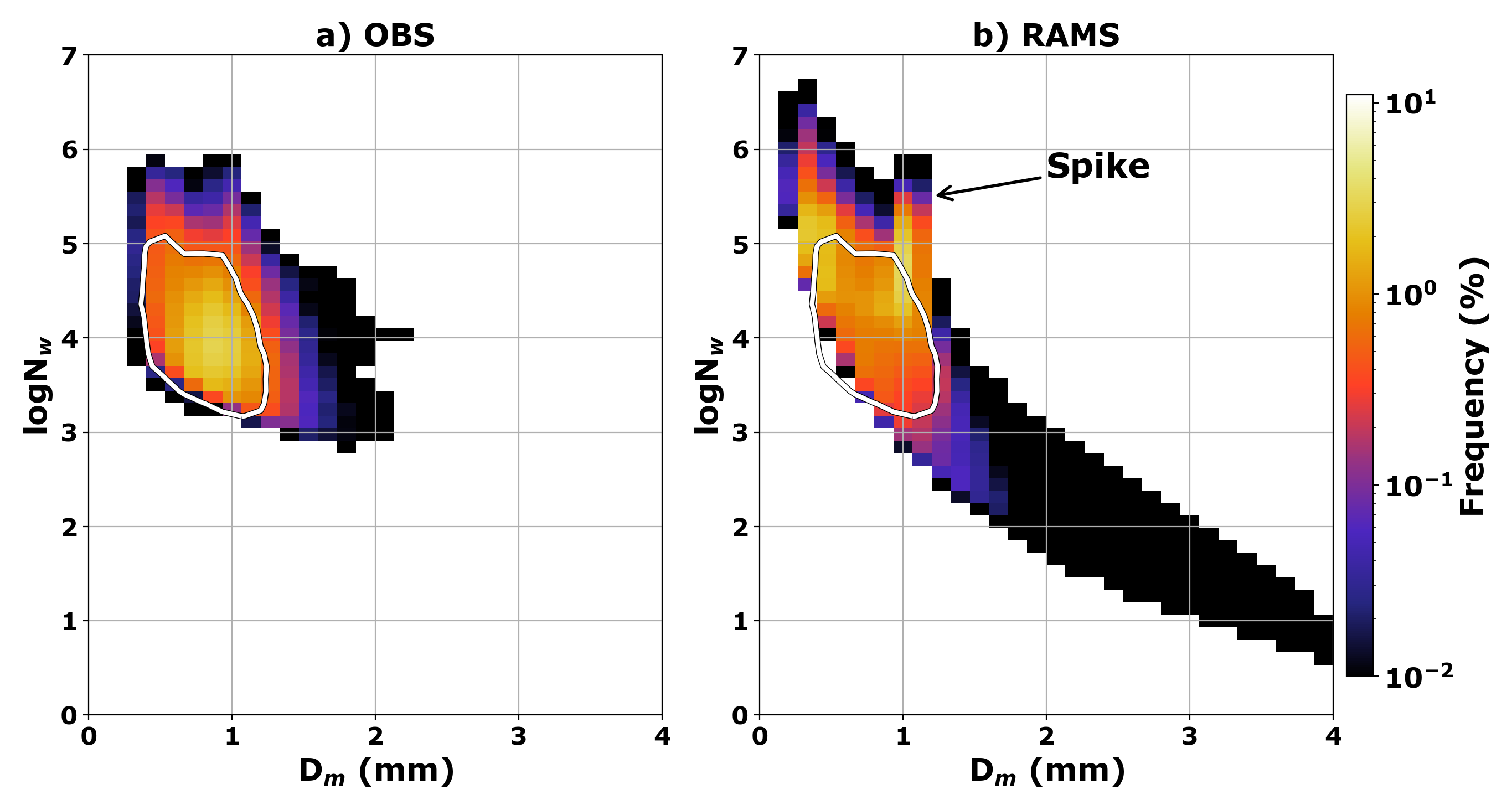Assessing raindrop breakup parameterizations using disdrometer observations
Submitter
Dolan, Brenda — Colorado State University
Saleeby, Stephen — Colorado State University
Area of Research
Cloud Processes
Journal Reference
Saleeby S, B Dolan, J Bukowski, K Van Valkenburg, S van den Heever, and S Rutledge. 2022. "Assessing Raindrop Breakup Parameterizations Using Disdrometer Observations." Journal of the Atmospheric Sciences, 79(11), 10.1175/JAS-D-21-0335.1.
Science

Figure 1. Raindrop mean diameter frequency distributions expressed in logNw (normalized intercept parameter) – Dm (volume-number mean diameter) phase space from (a) global surface disdrometer data (from Dolan et al. 2018) and (b) RAMS simulation data with a reference frequency contour from (a) overlaid. The distinct peak or “spike” seen for large logNw near Dm ∼ 1 mm is discussed in detail in the associated manuscript. From journal.
This study compares the size and number concentration of raindrop populations from surface disdrometer observations and numerical models in order to understand their similarities and differences with the goal of improving model representation of rain drop size distributions.
Impact
The comparison between observed and modeled raindrop populations has assisted in identifying the raindrop collisional breakup process as a substantial source of uncertainly in numerical models. A method of adjustment to current raindrop breakup parameterizations is proposed and examined.
Summary
An intercomparison of raindrop mean diameter frequency distribution (RDFD) is performed for numerical simulations of precipitating cloud systems using an array of models and microphysics schemes. Simulations are examined with respect to the raindrop size distribution (DSD) volume-number mean diameter (Dm) and intercept parameter (Nw). When compared to a suite of disdrometer observations, the RDFD resulting from each microphysics scheme exhibits varying degrees of mean drop size constraints and peaks in the frequency distribution of Dm. A more detailed investigation of the peaked RDFD suggests that the parameterization of raindrop collisional breakup can impose strong limitations on the evolution of simulated drop growth. While some drop breakup parameterizations are adjusted toward the observations by modifying the threshold diameter for the onset of breakup, this study explores the use of a modified maximum breakup efficiency. This method permits the parameterization to retain its threshold breakup diameter, while limiting the strength of drop breakup and permitting a broader range of drop sizes. As a result, the simulated mean drop sizes are in better agreement with observations.
Keep up with the Atmospheric Observer
Updates on ARM news, events, and opportunities delivered to your inbox
ARM User Profile
ARM welcomes users from all institutions and nations. A free ARM user account is needed to access ARM data.


















